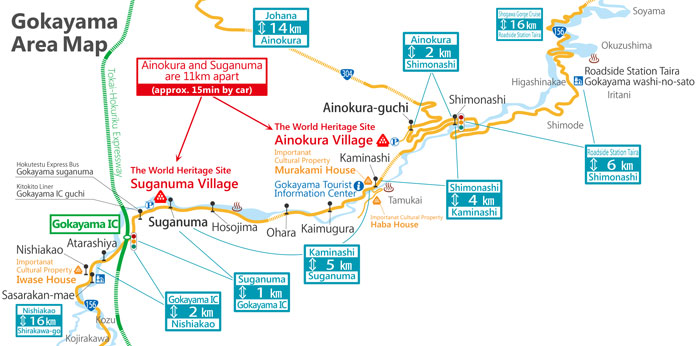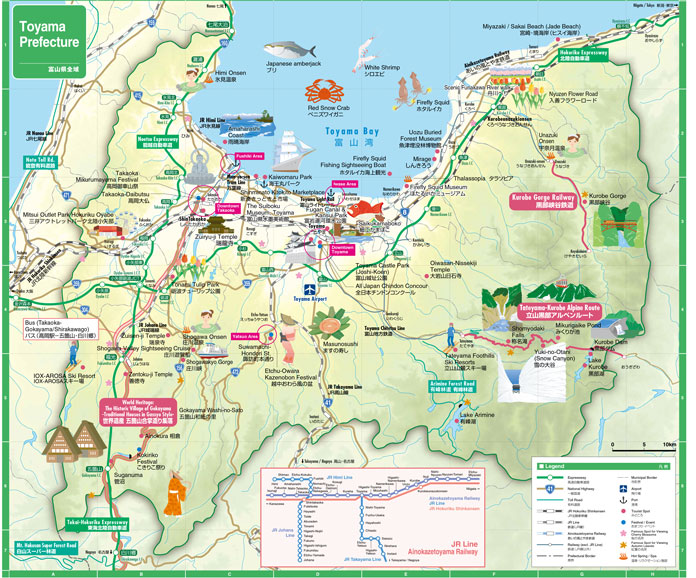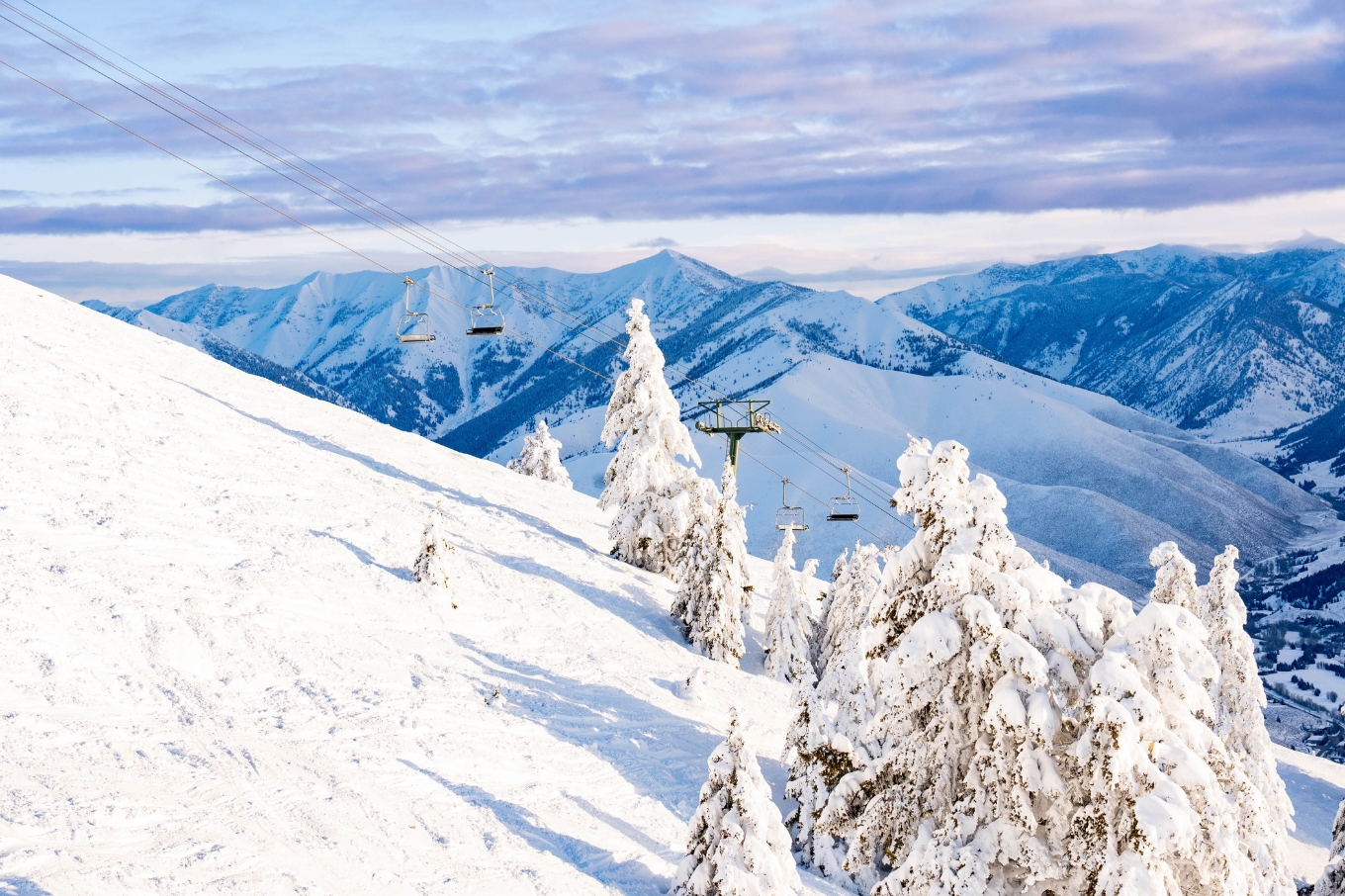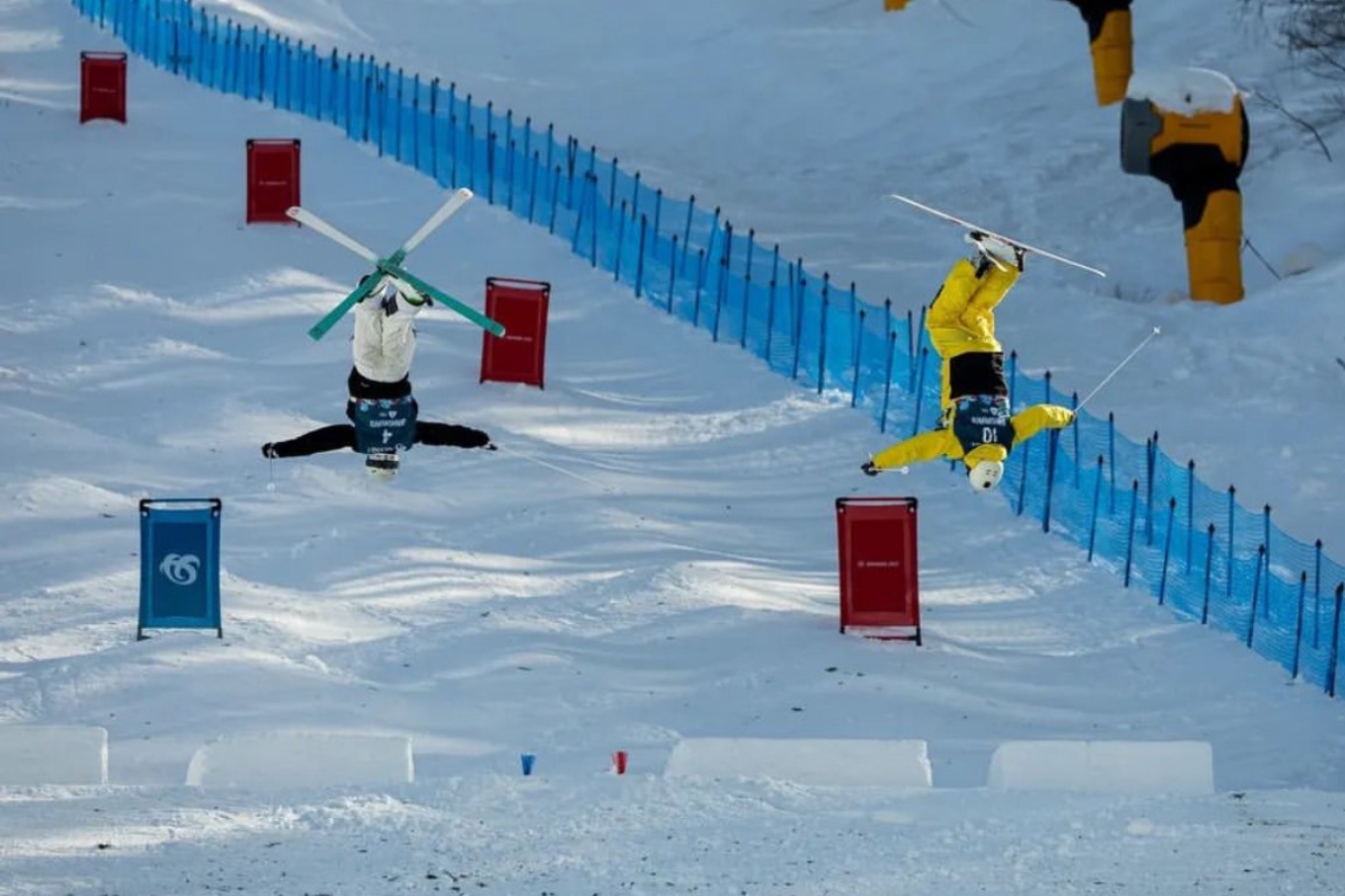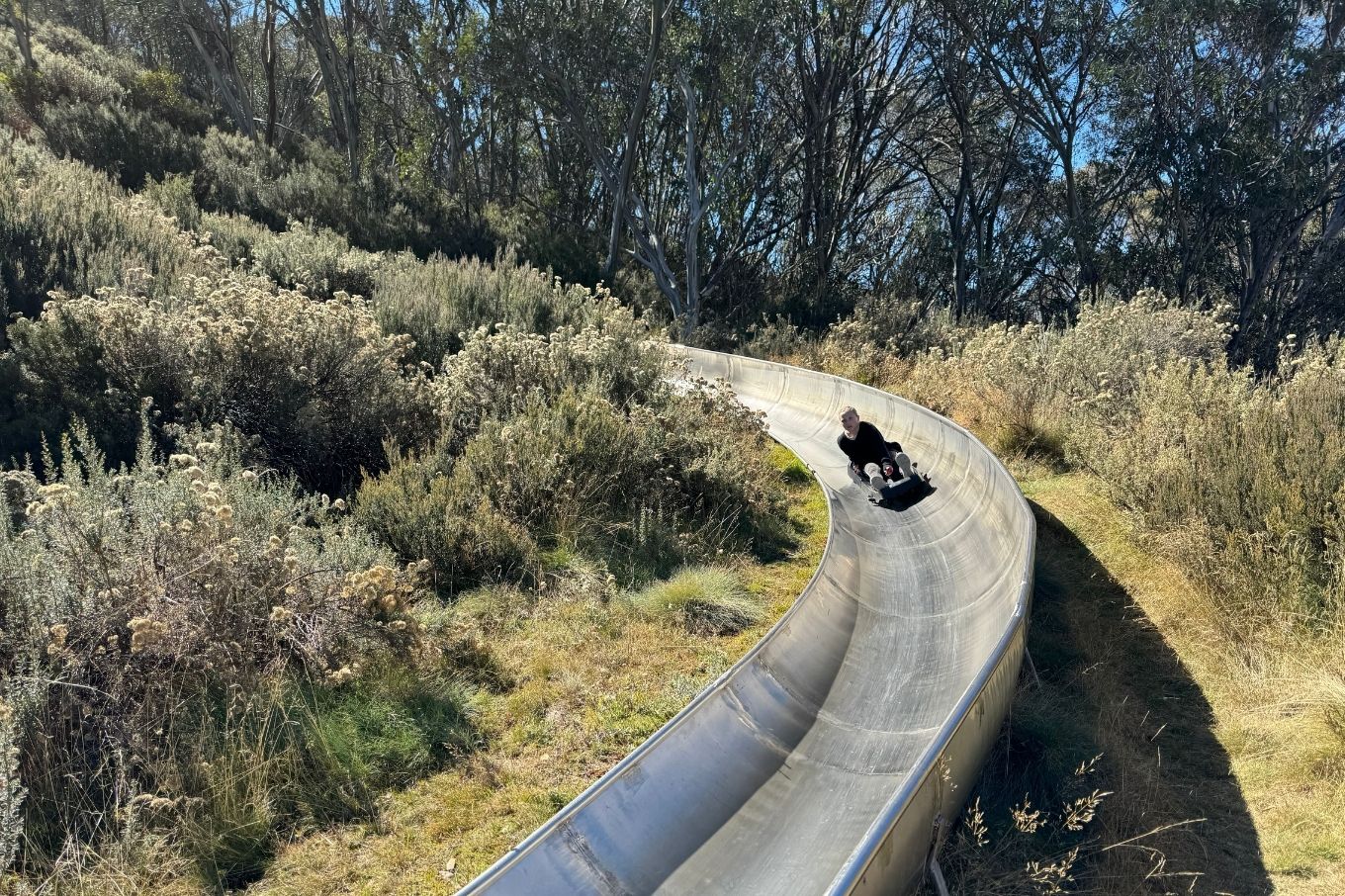Gokoyama World Heritage villages are an easy side trip
Gokoyama’s World Heritage listed thatch roof villages are a great side trip away from the major ski destinations like Myoko, Madarao, Lotte Arai Resort, Hakuba and Nagano. For a break between ski legs, a weekend day trip even, or better an overnight in one of the centuries old minshuki – traditional guest houses – you can indulge your Last Samurai fantasies picturing yourself holed up here for winter eating barbecued river fish out of the sunken hearth fire. The remnants of the Taira clan fled here in the 12th century and did precisely that.
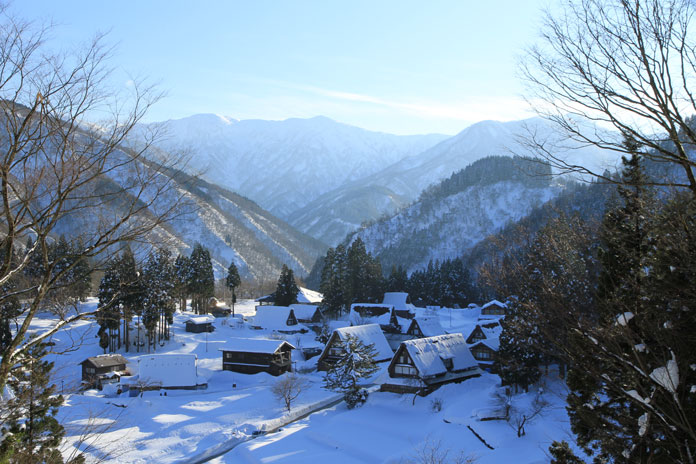
Toyama Prefecture is just down the shinkansen line from Joetsu past Myoko and Iiyama City, and actually has some decent skiing too – more on that later. For a change of pace and getaway from the ski hordes it’s the perfect escape.
The Gokoyama World Heritage villages of Ainokura and Suganuma are a must see in any season. They are known as the Gasshodukuri (or Gasshozukuri, Gasso-zukuri or just Gasso) villages, which refers to their steep thatch roofed architectural style.
It dumps in the Toyama ranges, which back onto some of Japan’s highest, including the famous snow wall route over from Nagano. So the villagers came up with their steep thatch rooves pitched at 60° or so to make it easier to get the snow off. They also planted and maintained forest barriers against avalanche danger.
You can visit as a day trip, but it’s much better to stay overnight at one of the traditional Minshuku guest houses. Enjoy a delicous dinner cooked over the coals – the skewered river fish are our favourite! The village population is only 50 or so, so staying here at night after the day trippers leave is a very peaceful experience.
Ainokura is the best example of the Gokoyama World Heritage villages. It maintains the historic ambience with 20 of the 27 houses there are built in the traditional Gasshodukuri style. They mostly date from the end of the Edo period through to the Meiji era. The oldest are believed to have been built in the 17th century, withstanding the severe winters for over 300 years!
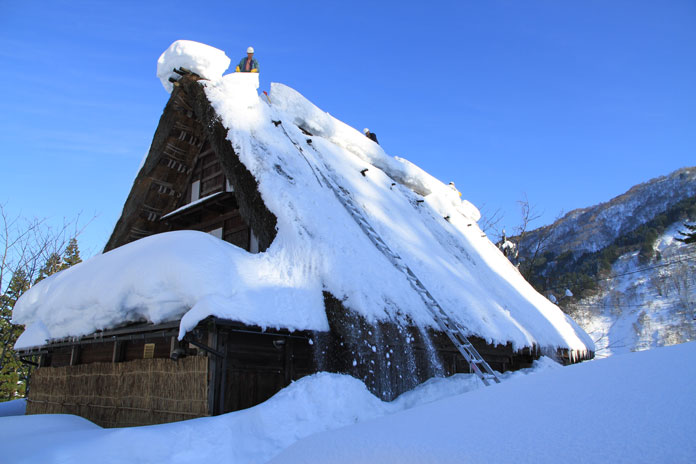
The minshuki guest houses only accommodate a few guests at a time, so staying in them is a very personal experience of the traditional culture. If you’re feeliing brave you might volunteer to help out with some snow clearing off the roof, though you might have trouble explaining a fall to your travel insurance ..
Getting to Gokoyama’s World Heritage villages
It’s really easy – just continue on down the Hokuriku shinkansen line from Nagano, Iiyama or Joetsu to Takaoka. From Takaoka you can use the Kaetsunou World Heritage Bus. The World Heritage Bus is a great way of getting to the UNESCO World Heritage Site Gokayama Historic Village of Gassho-style Houses at a reasonable price. A one-way ticket from JR Shin-Takaoka Station to Gokayama costs ¥1,200 or better is the hop-on hop-off pass for ¥2,500. Locals use the bus as well as tourists.
If you got cheap flights into Osaka or Nagoya there are good train connections, it’s about 3 hours 30 minutes from either of those.
Self-driving Suganuma village is just a minute off the Hokuriku Expressway from the Fukumitsu interchange as shown on the map below.
More local tourist info check the excellent English language sites for Toyama and Gokayama on the links here. For bookings including the traditional guest houses just enter your dates for the latest booking.com deals here:
